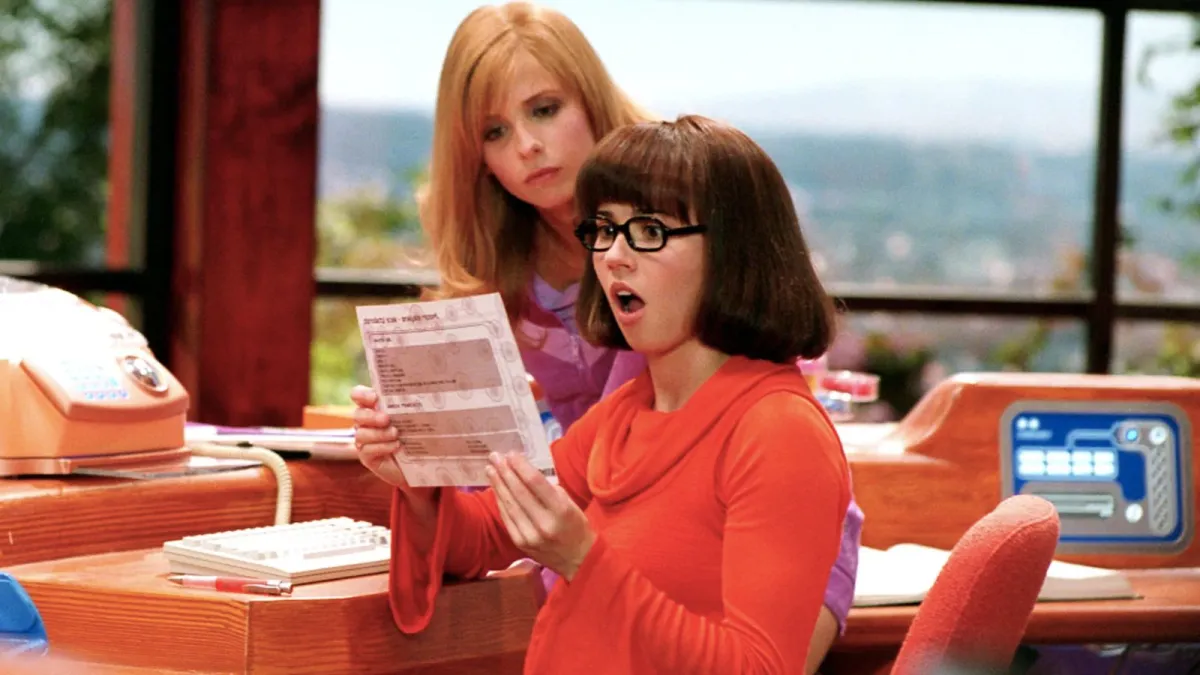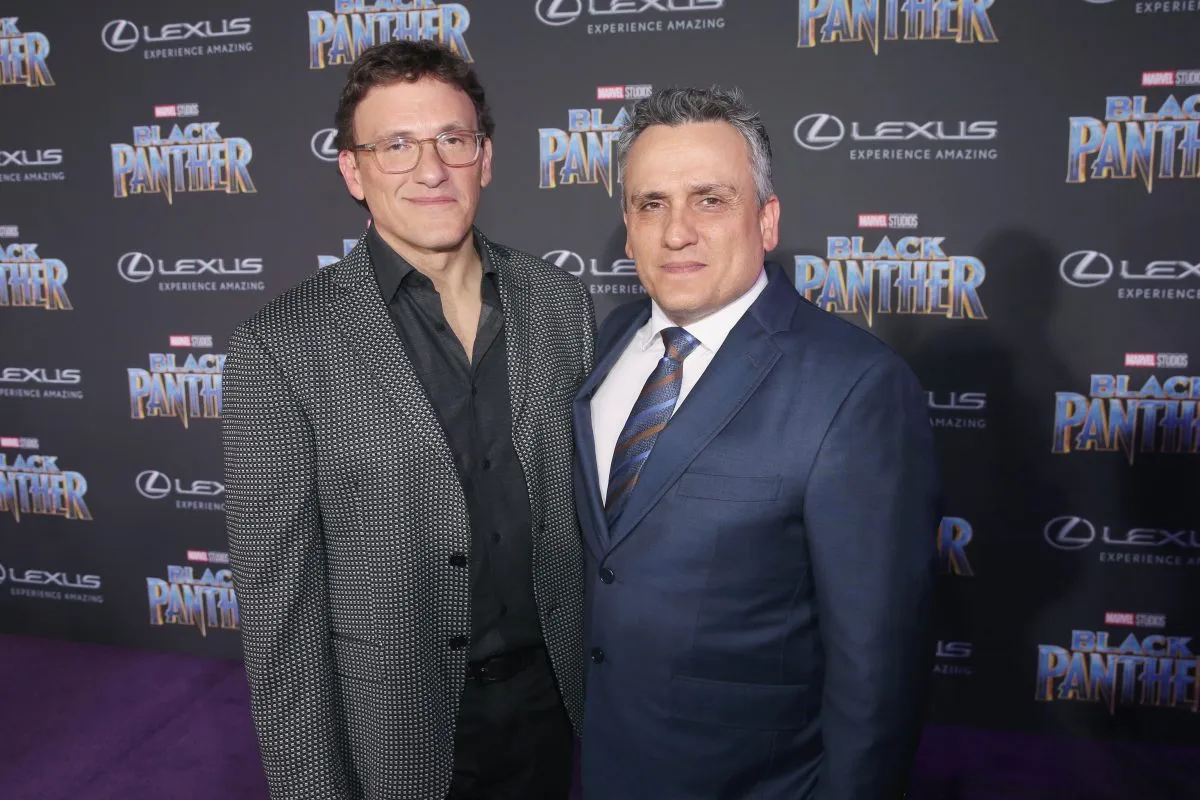Last year, Scooby Doo‘s Velma Dinkley finally came out as a lesbian in the HBO Max movie Trick or Treat Scooby-Doo! Now, Sarah Michelle Gellar—who played Daphne Blake in the live-action Scooby-Doo movies written by James Gunn—has revealed that she and Linda Cardellini, who played Velma, filmed a kiss for the 2002 movie that was then cut from the film.
This aligns with Gunn’s previous comments about how Warner Bros. wouldn’t let him make Velma explicitly gay, so the information isn’t exactly new … But I can’t stop thinking about it.
On Friday’s Watch What Happens Live With Andy Cohen, a fan asked Gellar if it was true that Daphne and Velma were originally intended to have a romantic relationship “on the side,” of which she denied any knowledge. However, Gellar did reveal that a “steamy” kiss scene hit the cutting room floor.
“It was an actual kiss between Daphne and Velma that got cut. I feel like the world wants to see it, but I don’t know where it is,” she said.
Suddenly, I want to get the hashtag #ReleaseTheGunnCut trending. Scooby-Doo hit theaters in 2002 and its sequel, Scooby-Doo 2: Monsters Unleashed, was released in 2004. In a 2020 fan Q&A, Gunn said, “In 2001 Velma was explicitly gay in my initial script. But the studio just kept watering it down and watering it down, becoming ambiguous (the version shot), then nothing (the released version), and finally having a boyfriend (the sequel).”
According to Gellar’s comments from Watch What Happens, the original Scooby-Doo script and shoot were “less family-friendly” than the theatrical release. In addition to the cut kiss between Velma and Daphne, there were also comments about Fred Jones (played by Gellar’s husband, Freddie Prinze, Jr.) being bi or pansexual.
While this information is interesting, it’s also frustrating. In Monsters Unleashed, Cardellini wears a skintight, red, latex suit, which is apparently OK—but any hint at queerness isn’t. This attitude certainly isn’t new: Scooby-Doo came out 21 years ago, and these attitudes still persist on a grand and often violent scale today. In 2022, Breitbart editor Emma-Jo Morris tweeted, “There is no such thing as a LGBTQ kid. Kids don’t have sexuality. They’re kids,” in response to Disney releasing a clothing collection for Pride. Morris’s tweet quickly became a meme, with commenters including queer Jewish activist Matt Bornstein using the exact same words to talk about heterosexuality.
Although Bornstein’s mockery doesn’t seem particularly deep, it reflects an important aspect of western culture. Heterosexuality is the “norm,” and any deviation is framed as abnormal or even harmful. Adrienne Rich coined the term “compulsory heterosexuality” in 1980 to describe the social phenomenon in which heterosexuality is not just assumed, but enforced—especially for women, who continue to be seen as less than men in every aspect of life.
Furthermore, if recognizing the existence of LGBTQIA children is “sexualizing them,” then asking questions of kindergarteners like “Do you have a boyfriend/girlfriend?” is introducing the same wolf in a heteronormative sheep’s skin. If we extend the metaphor to LGBTQIA representation in children’s media, then seeing Velma and Daphne kiss is the same as seeing Fred and Daphne kiss, or seeing Velma dress up in a catsuit to seduce Seth Green.
Actually, the latter seems a lot more explicit than any kind of kiss. The catsuit is played for comedy, but it’s still overtly sexual. Still, Warner Bros. kept it in Scooby-Doo 2: Monsters Unleashed but removed any reference to Velma being a lesbian from the first movie. And even though we’re not likely to ever see the deleted kiss scene, knowing it exists still evokes intense feelings.
I was 13 when Scooby-Doo hit theaters, and I have a relatively clear memory of going to see it with my mom and younger cousin. I already knew I liked girls at that point and, in hindsight, definitely had a raging crush on Gellar thanks to her titular role in Buffy the Vampire Slayer. In fact, Gellar kissing Selma Blair in 1999’s Cruel Intentions—a scene I saw by accident before my mom realized the movie was decidedly too old for me and sent me out of the room—was what initially made me realize I was gay. Then I tried to hide it for more than a decade, meaning I didn’t even begin to come out until college.
Cruel Intentions may have been too old for me, but Scooby-Doo was a children’s movie. At the time, I didn’t know anything about queerbaiting or queercoding or even queerness, since I was so afraid of it. Had I seen Daphne and Velma kiss, I’m certain it would have had a profound impact on my adolescence and perhaps made it easier for me to accept myself much, much earlier in my life.
According to GLAAD director of entertainment and media analysis Megan Townsend, inclusive storytelling in children’s media makes a huge mark on kids, including how they see themselves and the world. In a 2021 interview with NCTA, Townsend talked about internalizing the fact that she only saw LGBTQIA storylines explored solely with adult characters when she was a kid: “[I]t was like you have to wait until all of these things are true before you can start to do anything about who you are.”
Now, LGBTQIA representation in children’s media is becoming more and more common, with animated series like Steven Universe, The Legend of Korra, Adventure Time, She-Ra and the Princesses of Power, and The Owl House leading the charge. As mentioned above, Velma has officially come out as a lesbian in Scooby-Doo canon, and LGBTQIA representation is a lot more common in general than it was 21 years ago.
As representation continues to shift in a positive direction for queer creators, characters, and stories, more people are coming out as LGBTQIA than ever before. A 2021 Gallup poll reveals that 5.6 percent of Americans identify as LGBTQIA, up from 4.5 percent in 2017, with younger generations more frequently identifying as something other than heterosexual. As many as one in six Gen-Z adults identify as something other than straight or cisgender.
Although we can’t necessarily say that seeing queerness in media directly correlates with how people choose to identify or express themselves, it seems safe to say that the more we normalize queerness, the less ‘othered’ LGBTQIA youth will feel.
I certainly would have felt safer, more seen, and less like I was doing something wrong if I had media that showed me how many different ways queerness can exist. Instead, I experienced years of compulsory heterosexuality in the media I encountered, with just enough smatterings of queerness to make me gaslight myself into believing I didn’t want to see more of it and that I was totally, 100 percent straight.
Seeing queer romance onscreen is no more or less harmful than seeing straight romance. In fact, I’d argue that it’s better than seeing straight romance. To be clear, I don’t think queerness is superior. I simply believe that the oversaturation of heterosexual media means kids don’t have to seek it out the same way they used to have to hunt down LGBTQIA media. The latter is now more common, but it’s still just a drop in the pond.
Queer kids deserve more and better. Child-me also deserved that, and Daphne and Velma absolutely should have kissed in the Scooby-Doo theatrical release. They should have been kissing for years in the beloved cartoon.
(featured image: Warner Bros.)









Published: Feb 8, 2023 06:06 pm